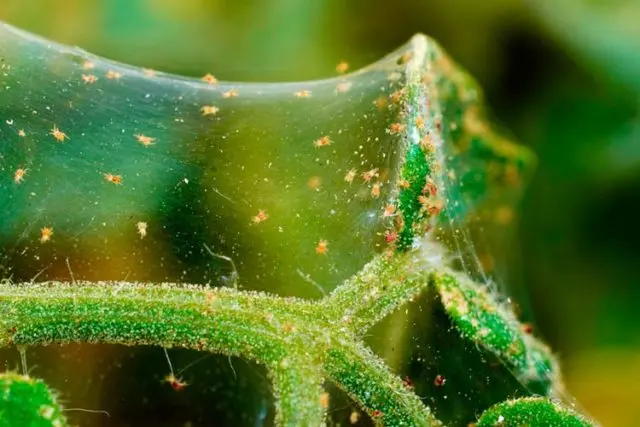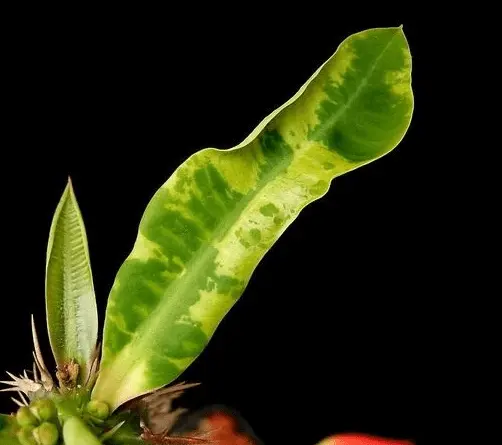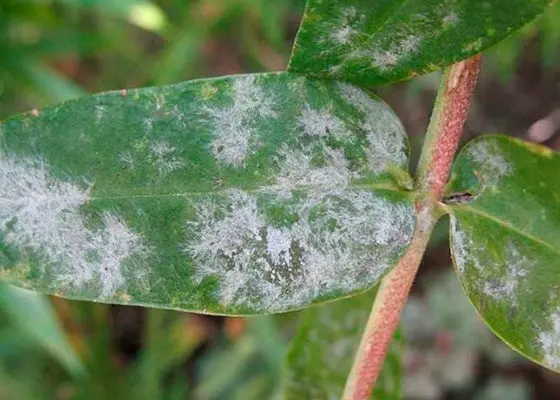Contents
Phlox leaves dry – this symptom should not be ignored. First of all, it is recommended to increase watering and feed the flowers with nitrogen fertilizers. If this does not work, most likely the bushes are affected by the disease. Then it should be treated with a fungicide. In some cases, the bushes have to be dug up and burned, since the diseases are incurable.
List of reasons why phloxes turn yellow and dry
The reasons for the yellowing of leaves in phloxes can be very different, but most often they are associated with improper care – a lack of moisture and insufficient fertilizer. If normal care is provided, the leaves dry due to diseases (for example, root rot, mosaic) or pests (spider mites, stem nematodes, and others).
Violation of the landing rules
Very often phloxes dry already in the first season. The most likely cause is related to non-compliance with landing rules:
- Phlox leaves dry due to the hot sun, so they need to be planted in partial shade from shrubs or trees. Otherwise, the foliage gets burned, especially after watering, when drops of water fall on it.
- Stagnation of moisture negatively affects. Phloxes dry out and gradually die. This is often observed if the seedlings are planted in a lowland. Therefore, it is desirable to make a slight slope so that the precipitation flows down.

Phloxes prefer partial shade, so it is better to plant them near shrubs, trees or buildings.
Violation of the rules of care
Phlox leaves turn yellow and dry due to improper care:
- Lack of moisture: flowers need to be watered early in the morning or in the evening at the rate of 2 buckets per 1 m2. At the same time, water is given directly under the root – it is important to ensure that it does not fall on the leaves. The frequency of watering depends on precipitation: in a drought – 2 times a week, in a rainy period – 1 time in 7-10 days.
- Lack of loosening can also lead to wilting of the leaves. The earth needs to be loosened 1-2 times a month, especially after fertilization. Then the nutrients will quickly go to the roots, and from there they will spread throughout the plant.
- Another reason is infertile soil and lack of top dressing. If the leaves dry and the phlox grows slowly, then they are deficient in nitrogen. Such dressings are usually applied in April or May. You can use urea, ammonium nitrate or complex fertilizer. An alternative is organic (slurry, mullein or bird droppings). In all cases, act according to the instructions. It should be borne in mind that fresh manure should not be used – it will certainly lead to root rot.
- Often, the lower leaves of phlox dry out due to lack of care: when weeds constantly appear around the plant, they inhibit its growth, take away moisture and nutrients. You can fight them by weeding and mulching the roots.
Hay, sawdust, needles and other improvised materials are suitable for sheltering the near-trunk circle.
Weather
Most varieties of phlox are undemanding to care and weather conditions. They tolerate heat quite well, especially if, after abundant watering, a layer of mulch is put on the ground.
However, during a prolonged drought, the leaves begin to dry and turn yellow. First they wither, then the plant tends to the ground. If nothing is done, the bush will die. To prevent this, it is necessary to ensure timely watering. Moreover, in the heat it can be increased up to 2 times a week (1,5-2 buckets per 1 m2 flower beds).

Very often, phlox leaves dry due to lack of moisture.
vermin
Pests are of particular danger, because because of them, not only the leaves turn yellow and dry, but the whole plant can die. In some cases, it is not possible to cope with insects. Then the bush should be dug up and burned so that neighboring plants do not have time to suffer.
Nematode
Sometimes the appearance of a stem nematode leads to the drying of the leaves and the general wilting of the plant. This is a very dangerous pest that affects the entire flower. External signs are:
- leaves dry and curl;
- the tops of the shoots become weak, thinned;
- growth slows down, the plant wilts;
- inflorescences are formed ugly, flowers are small.
Unfortunately, it is impossible to completely destroy the nematode. Therefore, the bush is simply dug up, carried away and burned. The place where he grew up needs to be disinfected. To do this, you can use a 1-2% solution of potassium permanganate or any copper-containing agent. The resulting preparation is abundantly watered every square meter of soil. Then, for the next season, the soil is dug up and nasturtiums or marigolds are planted.
spider mite
Spider mite is a very common pest, because of which the leaves dry not only in phloxes, but also in many other plants. Signs of defeat by these insects are easy to determine:
- small light dots appear in large numbers on the inside of the leaves;
- gradually the leaf plate begins to turn white and dry out;
- with the naked eye, colonies of mites are visible on the shoots, as well as a thin cobweb on the foliage and on the stems;
- phlox noticeably lags behind in development, for example, inflorescences are not formed, growth is greatly slowed down.
To cope with this unpleasant pest, it is recommended to cut off all yellowed leaves and take them outside the flower garden. There it is better to burn them or place them in sealed bags and throw them away. The plant itself must be treated with an insecticide, for example:
- “Aktellik”;
- “Fitoverm”;
- “Neoron”;
- “Skelta” and others.
It is enough to choose one of these means. You need to act according to the instructions.

A clear sign of the appearance of a tick is a thin silver cobweb on leaves and shoots.
disease
If the care is good enough, watering is moderate, fertilizing is done regularly, but the leaves still turn yellow and dry, the reason may be associated with infectious diseases. Depending on the type of pathogen, they are divided into viral, fungal and mycoplasmal.
Viral
If the phlox leaves turn yellow (and not only the lower ones, but the rest as well), this may be due to viral diseases. The most common cause is common mosaic, which is caused by the pathogen Pisum virus 2 Smith.
The first symptoms can be found even in young phloxes. Their leaves become slightly lighter along the veins. Then pale yellow rings and spots appear. Over time, they turn green, as a result of which the entire surface becomes one large “spot”. As a result, the leaves dry, and the phloxes die off. The problem is that no effective treatment for mosaic has yet been found. Therefore, the plant is simply dug up and carried away or burned.

External symptoms of tobacco mosaic: leaves turn yellow, dry and die
Fungal
If the lower leaves turn yellow in phlox, the cause may also be associated with a fungal infection. One of the most common diseases is root rot. The fungus settles on the root fibers, most often in the neck area. The roots begin to rot and then die, which can kill all plants.
External signs of phlox damage by root rot:
- first the lower leaves dry and turn yellow, then the upper ones;
- foliage is covered with brown spots;
- the plant becomes very lethargic and literally lies down on the ground;
- even if the plant does not fade, its growth rate slows down, despite watering and feeding.
Phomosis is another common fungal disease that causes the leaves of phlox and other crops to dry. Fungi begin to spread during the formation of buds. External signs of pathology:
- The lower leaves curl and dry.
- The skin on the lower part of the stem (up to 15 cm high) acquires a brown color, the tissues become loose.
- Also, the shoot is abundantly covered with cracks, after which the stem weakens and breaks even from a slight touch.
It is quite difficult to fight phomosis, so it is better to organize prevention in advance, for example, spray the green part with a 1% solution of Bordeaux mixture. It is better to dig up the affected bush and burn it.
Sometimes plants are also affected by such a fungal pathogen as septoria. The second name for this disease is leaf spot. Its main stages:
- First, small spots of light gray color appear on the sheet. Often they are rounded, but there are other shapes.
- Then the spots increase and turn yellow, a burgundy border appears around them.
- The infection quickly spreads throughout the phlox, its leaves dry, and the stem begins to die.
- If half of the bush is affected, its death is inevitable.
Rust also shows similar signs – in this case, brown spots appear on the leaves, because of which they begin to dry and die. Most often, rust affects dark phloxes, so they are monitored with special care.
Powdery mildew is a fungal disease of phlox. She usually appears in early August. Stages of defeat:
- Pale spots appear on the lower leaves of the phlox.
- At first they are small, then they increase in size and begin to merge.
- The infection spreads to the upper leaves.
- If the disease is started, the leaves begin to dry, and the plant begins to wither.
At this stage, nothing can help phlox. The flower has to be dug up, carried away and burned.

Powdery mildew can be recognized by the appearance of a white coating on the leaves.
Mycoplasma
Mycoplasma diseases are a type of fungal infections. One of them is jaundice. External signs of damage:
- phloxes are far behind in development;
- leaves begin to curl and become pale;
- many small side shoots appear on the stems;
- if the flowers have already formed, their petals and stamens “merge”, turning into a kind of “leaves”.
It is not so easy to defeat jaundice, the affected bush will have to be dug up and destroyed. As a preventive measure, phlox should be treated with any fungicide.
What to do if the leaves of phloxes turn yellow, and the reason has not been established
In such cases, it is advisable to make sure that the plant is not affected by a dangerous infectious disease (otherwise it must be removed, otherwise neighboring phloxes will become infected). Then you can experiment with watering and fertilizing.
Surely, if the bushes lack moisture or nutrients, these measures will be enough. The first signs of improvement will be noticeable in a week. But if even after this there is no effect, it may well be that the phlox suffers due to heavy clay soil. Then the flowers can be transplanted to a new place. In the hole, you must first close up fertile soil from a mixture of well-loosened garden soil and humus. It is better to do this in late summer or early autumn.
Preventive measures
Yellowing leaves and other deviations are easier to prevent than to deal with them. In many cases, the treatment of phlox is impossible. Therefore, it is advisable to immediately provide the flowers with normal care – regular (but moderate) watering, fertilizing, and also take preventive measures against diseases – in April or May, treat with any means (one to choose from):
- Bordeaux liquid;
- “Order”;
- “Maksim”;
- “Fitosporin”;
- “Skor” and others.
Secondary treatment can be carried out after a month. If in the previous season the plants already suffered from fungi and other pathogens, it will be necessary to carry out a third treatment (also with an interval of 1 month).
Conclusion
Phloxes dry leaves most often due to illness, but the reasons can be very different. Novice gardeners do not always correctly calculate the amount of watering and fertilizer, so seedlings can dry out and disappear. It is important to carry out timely prevention. Treating bushes is very difficult and not always effective.









